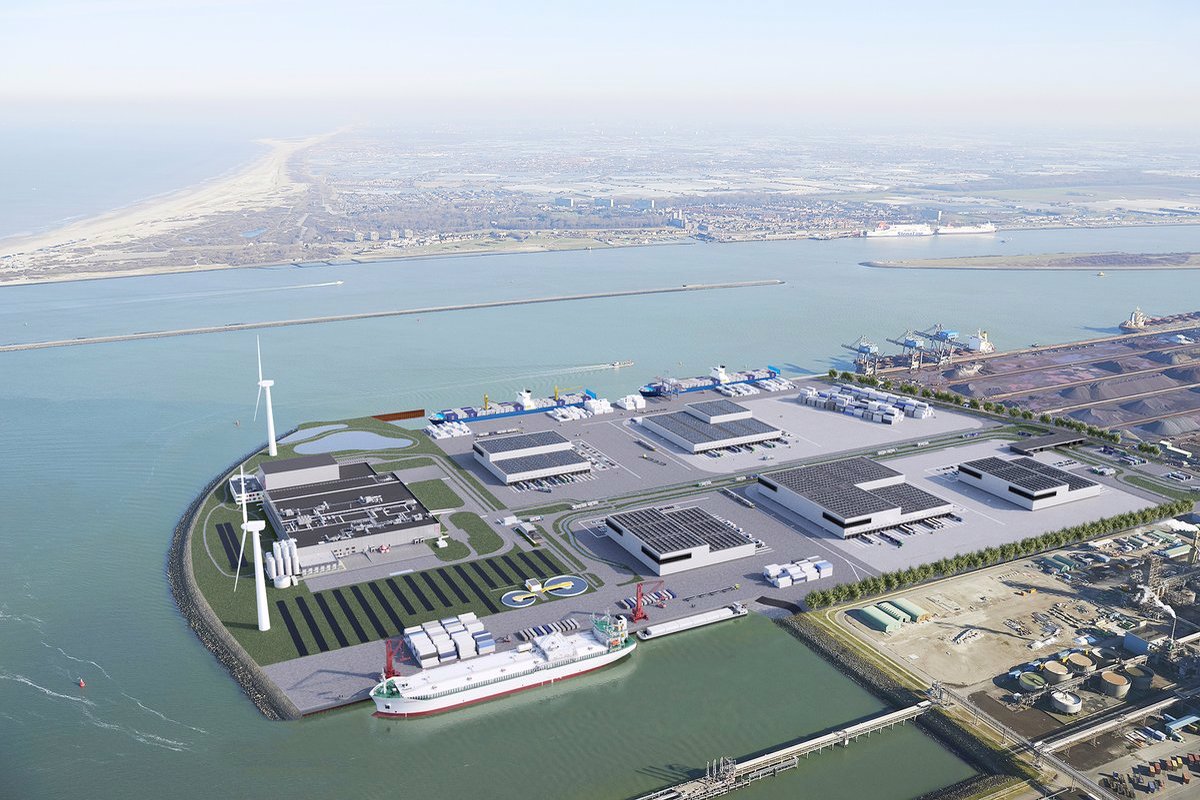The Week in Alternative Fuels
Here are some key developments in alternative bunker fuels from the past week.
 PHOTO: Aerial view of Port of Rotterdam. Twitter of @PortOfRotterdam
PHOTO: Aerial view of Port of Rotterdam. Twitter of @PortOfRotterdam
The shipping sector is bracing for the International Maritime Organization's 80th Marine Environment Protection Committee (MEPC) meeting starting on 3 July. The US is one of the many nations that have urged the IMO to adopt a net zero emissions by 2050 strategy. The US has proposed an interim target of reducing greenhouse gas (GHG) emissions from global shipping by 37% by 2030.
US Democrats recently also introduced an emission-reduction bill for domestic shipping to Congress. With the Clean Shipping Act, they aim to eventually eliminate emissions from ships doing business in the US. According to the draft bill, all vessels sailing between US ports or between US and foreign ports will be required to reduce their carbon intensity by 20% between 2027-2029, 45% between 2030-2035, 80% between 2035-2040, and 100% starting in 2040.
Some shipping companies have taken on more active roles to facilitate the production and consumption of marine fuels and technologies with zero-emission potential.
Through its subsidiary MOL Clean Energy, Japanese shipping major Mitsui O.S.K Lines (MOL) invested in a US-based blue ammonia project. Located in Louisiana, the plant will produce up to 7.2 million mt/year of blue ammonia. The deal will boost adoption of cleaner ammonia "within our fleet and customer base," said MOL Clean Energy's chief executive Tomoaki Ichida, referring to MOL's fleet.
Spanish energy company Iberdrola and ACE Terminal have sketched out a green shipping corridor between Spain and the Netherlands. Iberdrola will ship green hydrogen - in the form of its derivative green ammonia - to ACE Terminal’s import facility in Rotterdam. ACE Terminal will either convert it back into green hydrogen and supply it to northwest Europe or supply the green ammonia as a bunker fuel.
Besides adopting cleaner marine fuels, carbon capture can be an efficient way of lowering a vessel's carbon dioxide emissions (CO2). German chemical giant BASF partnered with CSSC Power, a unit of China’s CSSC, to develop an onboard CO2 capture system for ships. The companies intend to test various marine fuels and engines compatible with the onboard carbon capture system.
By Konica Bhatt
Here is our selection of top five alternative fuels stories from this week:
Countdown to MEPC 80: US implores IMO to adopt net-zero emissions by 2050
US introduces Clean Shipping Act to combat shipping emissions
MOL Clean Energy backs Louisiana blue ammonia project
Iberdrola partners with ACE and Hynetwork to establish green corridor
BASF, CPGC team up to develop carbon capture system for shipping





